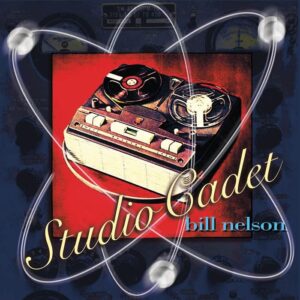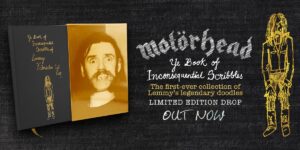Yoko Ono Reflects On ‘Giving Energy’ to Lennon’s Fans

Time has been good to Yoko Ono. Once derided by fans as a divisive force in the Beatles universe, Ono is now the trusted guardian and quality control overseer of her late husband John Lennon’s legacy — all while maintaining her own career as a vital musical and visual artist and peace activist.
Ever since she completed “Milk and Honey” in 1984, Ono has presided over a continuing series of reissues and repackagings from Lennon’s vaults — including the “Lennon” boxed set in 1990, the “Acoustic” compilation album in 2004, the limited-edition set of vinyl singles released in April to mark Record Store Day and a remastered edition of VH1’s “John Lennon: Behind the Music” — as well as such ongoing projects as the John Lennon Educational Tour Bus and the John Lennon Songwriting Contest.
Her master stroke, however, comes with this month’s “Gimme Some Truth” campaign to mark the 70th anniversary of Lennon’s birthday on Oct. 9, involving multiple releases by EMI Music in North America on Oct. 5 (and one day earlier in the rest of the world). The campaign features eight remastered Lennon solo albums and new titles, including “Power to the People: The Hits,” which will be available in two different versions; “Gimme Some Truth,” a four-CD boxed set with songs divided thematically rather than chronologically; the “John Lennon Signature Box,” with the eight remastered solo discs plus three discs of home tapes and Lennon’s singles; and “Double Fantasy Stripped Down,” which answers fans’ long desire for a more raw representation of the comeback album that came out just three weeks before Lennon was shot to death on Dec. 8, 1980, outside his home in New York.
Ono was an active force in putting all of these together — sitting in EMI’s Abbey Road studios to remaster all 121 of Lennon’s solo tracks, helping to group the compilations, choosing Lennon’s own artwork to accompany the releases, even mending an estranged relationship with “Double Fantasy” co-producer Jack Douglas to bring him into the “Stripped Down” project. It was arduous, exacting and emotional, she says, but ultimately a satisfying endeavor that gave even Ono new insight into and respect for Lennon’s music, which she’s trying to pass on to fans through these additions to his catalog.
Billboard: How do you view your role with John’s catalog and legacy? As a curator?
Yoko Ono: Curator doesn’t sound right. Protector, maybe.
What was the point of transition when you assumed that role? Was it immediately after his death?
I was always a protector, I think, but especially after John’s passing. Before that, I was putting all my energy into the partnership we had and protecting John. John was the one who needed protection. John was the famous one out there. I was in the shadows, so I didn’t need to have much protection. So I was doing that job, and when John left suddenly, I thought, “What am I going to do? Where am I going to put this energy?” Of course I have my son [Sean], but that’s a different story. There’s a big, big, empty space there. Then I thought, “OK, I can give my energy to John’s fans that I gave John.” So I announced that every year I’m going to give you something, and I think I was thinking one thing every year — but it turned out to be more than one thing, I think. I was doing my own thing as well, on the side, but with John’s thing I think I’ve done quite a lot.
You do, in fact, have your own career in music and visual art, among other things. How do you balance those with what you do with John’s catalog, or do they complement each other?
It’s not that they complement each other. I would have felt guilty if I ignored John’s work or did not do as much for John’s work and concentrated on my work. So I concentrated my energy and effort more on John’s work, and mine was more like, “If it happens, it happens.” And it did happen, actually, but without my plan, in a way.
Prior to his death, did you and he ever talk about how you’d like each other to handle your individual legacies?
Well, no. We didn’t think we were going to die. We thought … Well, John said over and over again that one day we’ll be in our rocking chairs together, watching the ocean or something, and waiting for Sean’s postcard to come, that kind of thing. We were thinking of our old age.
This all began with “Milk and Honey” in 1984. What was your vision for that album?
Well, there was no vision. When we were working on “Double Fantasy,” that was the title that John coined, and I came up with “Milk and Honey” and saying, “The next one should be ‘Milk and Honey.’ ” And John said, “Yeah, yeah, let’s do that.”
We had all the songs ready for “Milk and Honey,” except that there were several songs of mine, like “You’re the One,” [that were] definitely created afterward. But I made it into basically featuring John, John’s songs that he wanted on “Milk and Honey” to make it still a conversation, a dialogue between a man and a woman.
How did the “Gimme Some Truth” campaign take shape?
As you can imagine, this 70th birthday thing is really big. It was planned by Capitol and EMI initially, but when they told me this big plan, it’s a kind of thing they’ve never done before, or I don’t think that any record company has done, just presenting the ultimate John Lennon as a Renaissance man, in a way. It’s not just music; it’s some collages and things that have never been out there. I was really impressed that they were going to gamble with something like that, so I wanted to drop everything and join them.
Does what’s coming out represent the initial vision for the project or did you adjust some things in the plan?
I didn’t really tweak it or anything. I just wanted to make sure the quality was tops — that’s where I came in, I suppose, down to photos and everything. I wanted to make sure that I improved it, improved the choices. I was interested in every part of this project, actually, to the point where … I went to Abbey Road studios and remastered all John’s songs; 121 of them.
What kind of experience was that?
That was sort of a big job for me, and it was kind of trying in a way, both physically and emotionally. I didn’t think I was going to feel anything personally because I have been doing John’s work for the past 30 years, so I thought I can just do it how I should do it — professionally. But when I was doing that, I suddenly realized this was a new experience for me in a sense that I suddenly discovered or started to discover how good John was as a professional musician and as an artist, and that really got to me. I wish John was here so I could say, “Hey, you’re good.” [laughs]
What was it you heard that gave you that enhanced perspective?
Well, it started to happen when I would listen to the “Double Fantasy” stuff of John’s. You know, in the ’70s and ’80s, around that time, the music world had a way of remixing things so the instruments were extremely big, strong, powerful, and they kind of buried the voice. And I used to say, “Let’s just push up John’s voice a little,” and I couldn’t do that as much as I wanted do. So this time, because it’s “Stripped Down,” we kind of dropped a few instruments and suddenly you hear John’s voice and how he’s singing, and his lyrics are very clear.
I didn’t know that John was so good and unique –not just unique, but the classical diction. His diction was so perfect in a way that just that alone impresses you. It’s almost like listening to a very professional actor doing Shakespeare. And of course you know the language is not Shakespeare, but I felt John was the Shakespeare of our age.
Source: Billboard


